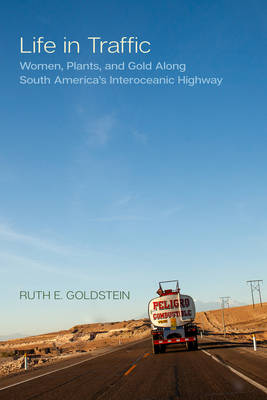
- Afhalen na 1 uur in een winkel met voorraad
- Gratis thuislevering in België vanaf € 30
- Ruim aanbod met 7 miljoen producten
- Afhalen na 1 uur in een winkel met voorraad
- Gratis thuislevering in België vanaf € 30
- Ruim aanbod met 7 miljoen producten
Zoeken
Life in Traffic
Women, Plants, and Gold Along South America's Interoceanic Highway Volume 63
Ruth E Goldstein
€ 124,45
+ 248 punten
Uitvoering
Omschrijving
In the year 2000, the presidents of Brazil, Peru, and Bolivia agreed to construct the Interoceanic Highway as part of the Initiative for the Integration of the Regional Infrastructure of South America. Instead of bringing the promised economic benefits to the shared triple-frontier Amazonian region, the highway facilitated trade in extracted natural resources, as well as a traffic in women. Centering "traffic" as both an analytic and a method, Ruth E. Goldstein argues that projects like this 3,500-mile highway have deeply gendered effects, reorganizing political economies of sex, nature, kinship, and care. Life in Traffic underscores how markets for women, plants, and gold are not just intersecting phenomena but historically co-constituted economies. Amazonian extractive industries, too, have global ramifications for a warming planet: as rainforests disappear, so do the oxygen-creating, carbon-sequestering, and life-sustaining abilities of Earth, known to many as Mother.
Specificaties
Betrokkenen
- Auteur(s):
- Uitgeverij:
Inhoud
- Aantal bladzijden:
- 297
- Taal:
- Engels
- Reeks:
Eigenschappen
- Productcode (EAN):
- 9780520427341
- Verschijningsdatum:
- 16/06/2026
- Uitvoering:
- Hardcover
- Formaat:
- Genaaid
- Afmetingen:
- 152 mm x 229 mm

Alleen bij Standaard Boekhandel
+ 248 punten op je klantenkaart van Standaard Boekhandel
Beoordelingen
We publiceren alleen reviews die voldoen aan de voorwaarden voor reviews. Bekijk onze voorwaarden voor reviews.








